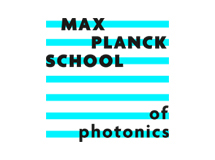Martin Quack - Parity Violation in Chiral Molecules: From Theory towards Spectroscopic Experiment and Evolution of Biomolecular Homochirality
Prof. Martin Quack, ETH Zurich, Switzerland
Abstract:
Symmetry and asymmetry are concepts, which are used in a wide range of contexts, from the fundamental sciences, mathematics, physics, chemistry and biology to the arts, music and architecture [1]. We shall start with an introductory discussion of three fundamental questions on symmetry, relating physics to molecular quantum dynamics and stereochemistry.
(i) To what extent are the fundamental symmetries and conservation laws of physics and their violations reflected in molecular quantum dynamics and spectroscopy, in general?
(ii) How important is parity violation for the quantum dynamics and spectroscopy of chiral molecules, in particular?
(iii) How important is parity violation for biomolecular homochirality, i.e. the quasi exclusive preference of L-amino acids and D-sugars in the biopolymers of life (proteins and DNA)?
The observation of biomolecular homochirality can be considered as a quasi-fossil of the evolution of life [1], the interpretation of which has been an open question for more than a century, with numerous related hypotheses, but no definitive answers. We shall briefly discuss the current status and the relation to the other two questions.
The discovery of parity violation led to important developments of physics in the 20th century and is understood within the standard model of particle physics, SMPP. For molecular stereochemistry it leads to the surprising prediction of a small energy difference D of the ground state energies of the enantiomers of chiral molecules, corresponding to a small reaction enthalpy for the stereomutation between the R and S enantiomers [2].This reaction enthalpy would be exactly zero by symmetry with exact parity conservation. Theory predicts D to be in the sub-femto eV range, typically, depending on the molecule (about D= 100 aeV for ClSSCl or CHFClBr, corresponding to a reaction enthalpy of about 10 pJ/mol). We have outlined three decades ago, how this small energy difference D might by measured by spectroscopic experiment [3], and recent progress indicates that experiment might be successful in the near future [4-7]. We shall discuss the current status of our experiments including alternatives pursued in other groups and the possible consequences for our understanding of molecular and biomolecular chirality. For background reading see [1-7].
[1] M. Quack, J. Hacker (Eds.), Symmetrie und Asymmetrie in Wissenschaft und Kunst, Nova Acta Leopoldina NF Band 127, Nr. 412, Wissenschaftliche Verlagsgesellschaft, Stuttgart, 2016 (book, 275 pages with contributions in German and English)
M. Quack, Adv. Chem. Phys., 2014, 157, 249-290, Chapter 18.
[2] M. Quack, Fundamental Symmetries and Symmetry Violations from High Resolution Spectroscopy, in Handbook of High Resolution Spectroscopy, Vol. 1, Chapt. 18, pp. 659-722 (Eds.: M. Quack, F. Merkt), Wiley, Chichester, New York, 2011
[3] M. Quack, Chem. Phys. Lett., 1986, 132, 147-153.
[4] P. Dietiker, E. Miloglyadov, M. Quack, A. Schneider, G. Seyfang, J. Chem. Phys., 2015, 143, 244305, (and references cited therein).
[5] R.Prentner, M. Quack, J. Stohner, M. Willeke, J. Phys. Chem. A, 2015, 119, 12805-22.
[6] C. Fábri, Ľ. Horný, M. Quack, ChemPhysChem, 2015, 16, 3584–3589. S. Albert, I. Bolotova, Z. Chen, C. Fabri, M. Quack, G. Seyfang, D. Zindel, Phys. Chem. Chem. Phys. 2017, 19, 11738-11743.
[7] S. Albert, I. Bolotova, Z. Chen, C. Fábri, L. Horný, M. Quack, G. Seyfang, D. Zindel, Phys. Chem. Chem. Phys., 2016, 18, 21976-21993. A.Albert,F.Arn,I.Bolotova,Z.Chen, C.Fabri, G.Grassi, P.Lerch, M.Quack, G.Seyfang, A.Wokaun, D. Zindel, J.Phys.Chem. Lett. 2016, 7, 3847-3853
About DLS:
The Distinguished Lecturer Series (DLS) follows a colloquium format for a broad audience and will be followed by a reception to provide an opportunity for meeting the speaker.





